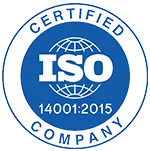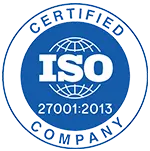Banking institutions manage a vast network of assets, from IT infrastructure and security systems to branch equipment and cash-handling machines. These assets play a key role in maintaining smooth operations, ensuring customer service efficiency, and meeting regulatory requirements. With multiple branches and remote locations, tracking and auditing these assets becomes a demanding task that requires a structured and accurate approach.
A well-organized asset audit system ensures that banks maintain compliance, reduce financial discrepancies, and optimize asset utilization. Without an efficient process, banks face operational slowdowns, increased risks, and higher maintenance costs. Implementing a reliable asset audit system helps financial institutions maintain transparency and control over their resources.
This article explores the common challenges banks face in asset audits and how a smart asset audit management system helps streamline operations, improve accuracy, and enhance compliance.
Challenges the Bank Faced in Asset Audits

A leading banking institution managing hundreds of branches and ATMs faced serious difficulties in tracking and auditing its assets. The absence of a structured system resulted in inefficiencies that affected financial accuracy, compliance, and operational workflows. These challenges created bottlenecks that impacted daily banking functions.
- Frequent asset discrepancies – The bank struggled with inaccurate records, leading to confusion about asset ownership, misplaced equipment, and unverified asset transfers between branches.
- Cumbersome and time-consuming audits – Manual data entry and paper-based processes made audits tedious and prone to errors, requiring extensive manpower and causing delays in asset verification.
- Compliance risks and regulatory concerns – With strict financial regulations, the bank faced difficulty in maintaining up-to-date asset logs, increasing the risk of non-compliance penalties.
- Escalating maintenance costs – The lack of real-time asset tracking led to unexpected failures, unplanned repairs, and unnecessary asset replacements, significantly increasing operational costs.
- Limited visibility into asset status – Without real-time insights, decision-makers struggled to monitor asset conditions, plan maintenance schedules, or optimize asset utilization effectively.
- Potential security vulnerabilities – Untracked assets, particularly IT equipment and financial devices, posed risks of unauthorized usage, theft, or misuse, leading to operational disruptions.
The Solution: Implementing TeroTAM’s Asset Audit Management System
A smart asset audit system by TeroTAM was introduced to resolve these challenges, offering a structured and automated approach to asset verification. This system ensured accurate tracking, automated reporting, and compliance management, reducing manual errors and operational inefficiencies.
1. QR Code-Based and Manual Asset Audits
A combination of QR-based automation and manual validation allowed efficient tracking and verification of thousands of assets across multiple locations.
- QR code scanning enabled quick identification and real-time asset tracking.
- Manual verification ensured that assets without QR codes were accurately documented.
- Audit teams had access to instant updates, reducing delays in reconciliation.
2. Mobile App-Driven Audits for Instant Verification
Eliminating paper-based records and manual data entry created a more efficient and accessible audit process through mobile technology.
- Field auditors could scan asset QR codes directly from a mobile app.
- Automatic synchronization reduced errors in data collection and updates.
- Real-time cloud-based access provided instant asset visibility across locations.
- Offline functionality allowed audit completion in low-network environments.
3. Role-Based Access and Digital Signatures for Compliance
Secure and controlled access ensured that audits were conducted with accountability and met compliance regulations.
- Only authorized personnel could approve or modify asset records.
- Digital signatures created a verifiable and tamper-proof audit trail.
- Audit reports were securely stored for regulatory inspections.
- Multi-level approvals ensured accountability at every stage.
4. Geo-Tagging for Location-Specific Audits
A location-based tracking system ensured that asset audits were conducted within designated premises, preventing off-site verifications.
- Auditors needed to be physically present at the location to validate assets.
- Real-time location mapping minimized fraudulent asset verification.
- Branch managers had access to live audit locations for better monitoring.
- Geo-restricted access improved accountability in asset tracking.
- Reports linked with location data simplified discrepancy resolution.
5. Checklist-Based Observations and Automated Proposals
A structured approach to inspections helped auditors identify asset conditions and suggest necessary actions based on predefined parameters.
- Standardized checklists provided a systematic way to assess IT, security, and operational assets.
- Observations were recorded with photographic evidence and condition grading.
- Automated proposals suggested maintenance or replacement actions based on asset health.
- AI-driven insights helped optimize asset utilization and reduce downtime.
- Procurement integration streamlined replacement approvals and budgeting.
- Customizable checklists allowed different branches to set specific compliance parameters.
6. Smart Reports and Analytics for Data-Driven Decision Making
A centralized reporting system provided data insights that improved asset health monitoring, budget planning, and compliance tracking.
- Asset condition scores provided a clear status overview for decision-making.
- Cost analysis reports categorized maintenance expenses based on asset condition.
- A complete audit timeline helped identify trends and potential risks.
- QR code scanning enabled instant access to detailed audit reports.
- Digital approvals ensure accountability in verification and sign-offs.
The Results: A More Efficient and Compliant Banking Operation

A structured approach to asset audits with TeroTAM CMMS resulted in significant improvements in operations and compliance.
- Audit completion time was reduced, improving efficiency across multiple locations.
- Discrepancies in asset records were minimized, leading to more reliable tracking.
- Compliance adherence was strengthened through automated reporting and secure approvals.
- Cost savings were achieved through better asset utilization and maintenance planning.
- Operational processes became more transparent, enabling informed decision-making.
Final Words
TeroTAM structured asset audit system plays a vital role in enhancing operational efficiency, regulatory compliance, and cost control for the banking sector. By enabling accurate tracking and verification of physical and digital assets, it helps financial institutions minimize risks and maintain accountability across all branches.
Looking to streamline your asset audits and improve transparency? 📩 Connect with us at contact@terotam.com to discover how TeroTAM’s automated asset management solution can transform your banking operations.
👉 Book your free demo now: https://terotam.com/request-demo





